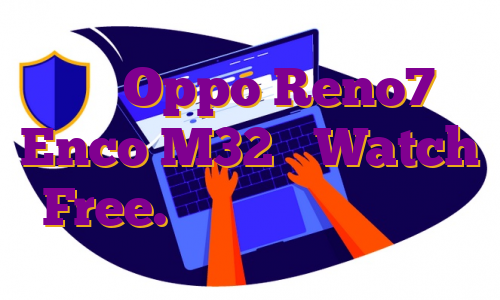The surprise exit of Singapore-based e-commerce player Shopee from India, less than six months after its high-profile entry into the world’s second-most populous nation, has once again caught markets by surprise. Just weeks earlier, the Indian government’s decision to ban the free version of Shopee parent, Sea Ltd’s mobile game, Free Fire, (the premium version escaped the axe for some reason) had plunged the company’s market capitalisation by $16 billion overnight.
On short notice to customers, Shopee announced that it was ceasing sales effective 29 March. Sellers were informed that the back-end will be kept operational till the end of May to settle payments, withdrawals and returns. Sea has said the decision to leave India was prompted by “global market uncertainties”. Those are clearly not India-centric, as just days prior to the India pullout, it had said it was quitting France, a market it had entered the same time it came to India, back in October.
While the timing of the announcement was a surprise, it wasn’t entirely unexpected. After clocking a sizzling 157% revenue growth in 2021, the company had forecast revenue growth to halve in 2022 to around 76%. From a peak of $360.60 on 20 October 2021–soon after the India and Europe forays were announced–the stock price of Sea tanked to $116.98 on 28 March on the NYSE, wiping more than $130 billion from its market capitalisation. The decision of Chinese internet giant Tencent, an early-stage investor in Sea, to pare its holding to under 5% also prompted a widespread investor exit.
However, the Tencent association was probably the reason Free Fire was banned, although Sea is not a Chinese company by any stretch and its CEO Forrest Li is on Singapore’s development board. But the Confederation of All India Traders (CAIT), a lobbying body that claims to represent millions of mom-and-pop stores that form the bulk of India’s $850 billion retail market, wrote to the government complaining that Tencent held a “substantial” stake of around 25% in Sea and that the company stores its data on Tencent Cloud, which is a violation of India’s IT and e-commerce laws.
Sea has always denied that it’s Chinese. Sea’s promoters, while originally from the mainland, are naturalized Singaporeans, and Sea continues to be one of the most valuable Singaporean companies in global markets. In fact, the ban caused diplomatic fracas between Singapore and India with Singapore taking up the issue at the government-to-government level with India. India, however, has neither clarified the reasons for the ban nor rolled it back so far. CAIT had also dragged Shopee to the Competition Commission of India (CCI), alleging unfair deep discounting and abuse of market power, which the CCI turned down.
Be that as it may, Shopee’s sudden exit holds three lessons for both potential foreign investors looking to enter the hyper-competitive Indian market, as well as India’s policymakers.
The first is a business one. The days of investors burning millions of dollars in the hope that the overall India Growth Story will rub off on their particular play are clearly over. While the overall attraction of a market of 140 billion consumers remains intact, it is clear that global investors are looking for strong business models, sustained revenue growth and quick breakeven. In fact, analysts have reacted positively to Sea’s India exit. A Morgan Stanley analyst note said “…for Shopee to win 5% GMV market it would cost up to $900m in annual EBITDA losses. Hence, SE’s no longer pursuing this strategy is a clear positive.”
In India’s e-commerce marketplace, which is witnessing an intense battle between Flipkart, owned by the world’s biggest physical retailer, Walmart, and Amazon, the world’s biggest online marketer, as well domestic titans, Reliance and Tata, who are leveraging their offline retail businesses online, quick profits appear distant at the moment.
For Sea, the India experience was a far cry from its hugely successful Brazil foray, where it became the most downloaded app for eight quarters in a row, reaching a third of the revenues of local giant Magazine Luiza SA within two years.
The second lesson is that it not only takes deep pockets but a deep understanding of how India’s policy, regulatory and legal systems work in order to stay long term. Sea found – as Walmart and Amazon did before it –that mere backing from its government will not be enough to cut the mustard in India.
Witness Amazon’s sprawling multi-court battle with Reliance to stop the latter’s takeover of Future Retail. Amazon is slugging its way through the Indian legal system, so much so that an exasperated Supreme Court judge sarcastically asked the firm’s counsel whether the court needs to build a separate room to house all the documents that it submitted in its filings! Walmart also learnt it the hard way, eventually caving in to regulatory changes and pivoting to a marketplace model, as did Amazon.
The third lesson is for India’s policymakers. High-profile actions like India’s many flip-flops on foreign direct investment, particularly in retail, or the sudden ban on Sea’s game app, have only strengthened a growing perception that the dice are loaded against foreign players in India, particularly in areas where there are large domestic business or political interests at play. Unless this is seen to change, India may find that regardless of global dynamics or the attractions of one of the world’s biggest markets, serious investors are no longer beating a path to its door.
Subscribe to Mint Newsletters * Enter a valid email * Thank you for subscribing to our newsletter.
Download
the App to get 14 days of unlimited access to Mint Premium absolutely free!
.



